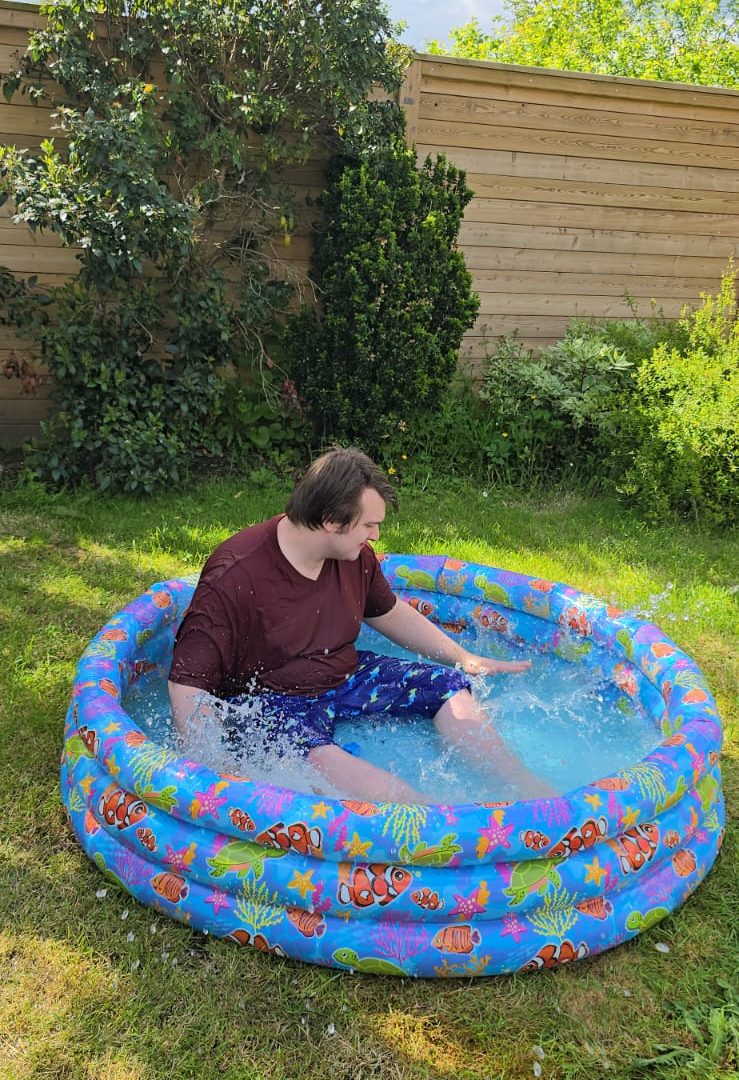
Clay thrives in his new home
Last year, FitzRoy took over a supported living service in Hampshire for people with learning disabilities and autism. Clay had lived there for six years, but when he recently had to move into a bungalow while his flat was undergoing repairs, we saw a remarkable transformation!
When we first met Clay, he was withdrawn and had been struggling for some time. Clay would easily become distressed and would damage his flat and his belongings. He struggled with taking care of himself, stayed in bed until late in the day, and spent most of his time alone in his flat.
Rebecca, FitzRoy’s Positive Behaviour Support Practitioner, said, “Staff were concerned with Clay’s deterioration, so we worked together to develop a plan to improve his quality of life. First, I got to really know him as a person, to understand his needs, and his background. I watched as he interacted with staff and how he responded to the environment around him and realised that his distress was predominantly due to his sensory needs.
“After a sensory assessment, it was clear Clay had extremely heightened sensory overload . I worked with his support team to establish appropriate routines, develop strategies and adapt his environment to help Clay communicate how he felt. We found these measures did lead to some improvements for him, but we could tell he was still finding the busy nature of the service quite difficult.”
While Clay’s flat was being repaired, he moved into a bungalow, and his progress has been extraordinary.
Service manager Charlie says, “We were eagerly awaiting the start of the repairs on Clay’s flat to see the impact of moving him to his own bungalow. We carefully planned the move, including assessing his new environment to make sure it was suitable, we removed any potential triggers or noisy equipment, and we are delighted to see our preparation was effective because it’s clear now that it was his living environment that had caused him so much distress over the years. Now, we’re seeing the real Clay, and it’s beautiful.
“The change in him is just remarkable. While he still reacts to certain noises, his reactions are much more easily definable and manageable now.
“Without the distractions of a busy environment Clay’s tolerance has significantly improved, and he has developed ways to cope with the noises in and around his home. He now follows staff prompts to complete his morning routines, including getting dressed and taking care of himself. Clay now actively participates in his daily life, making his own choices and going to the shops and out into the community. He has started experiencing the small joys of life and is having fun every day.
It’s incredible to think that Clay can now enter a shop, pick out his own items, and thank the person behind the counter. It’s unheard of for him to be able to cope with that level of sensory activity and interaction with new people.
Charlie says, “I believe that living alone is the right thing for Clay. This process has shown that in the right environment for him, he can thrive and with the correct support he can live a life that maximises his quality of life, he can continue to learn new skills that will maximise his independence. We are in discussion with Clay’s family and a team of social and health care professionals to agree what is best for Clay to maintain such a suitable environment. His support staff are doing an absolutely amazing job and have taken this opportunity to tailor their approach so that is the best it possibly could have been for Clay.”
